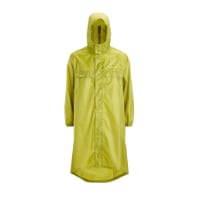homa_bird
Member
Hello all, I was on the CF early Sept to early Oct, and just wanted to start a thread about the wealth of medicinal plants, aka "weeds" I found along the way. As a long time plant medicine student and lately teacher, I was thrilled to see the wealth along the way. I KNOW this is a thread that hasn't been touched on much, because believe you me, I looked and looked before I left... 
I carried a wide mouth glass water bottle, and added things along the way, which, with all the sloshing and warm sun, made a nice beneficial tea.
Here are some personal plant favorites from the camino ditches and roadsides! My dearest wish is that many of you add experiences and knowledge to this thread and we can ethically and sustainably pick a few of these ubiquitous weeds, or just know they are they and give them a smile and a thank you as you walk by.
Stinging nettle. Careful how you pick it, (it can sting your fingers) but this is one of the best tonic and nourishing teas, good for over-all system health, esp kidneys, immune system.
St. John's Wort (or, as we like to say in midwifery circles, St. Joan's Wort). Still blooming in October here and there!! Flowers have red hypericum oil, good for mood elevation, also great for muscle pain and soreness!
Rose hips: all along the way in the fall: crush and add to water for Vit C, immunity booster
Wild fennel: Good for digestion (gas), helps respiratory system, cleans palate, also expands the mind?!
Dandelion: Not enough good things can be said about this eurasian native. Systemic tonic, great for liver health, and just about anything that ails you. ID real dandelion by the smooth leaves, hollow stem, and little "skirt" under the flower bud.
Dandelion look alikes: Groundsel: Tons along the trail all 500 miles! What a versatile survivor in all places from the meseta to the mountains! Groundsel, hawkbit, etc. etc. None of it will hurt you, it is all tonic and good to pop in your water bottle.
Teasel: Another hardy and widespread trail companion. Chinese herbalists loved it for kidney health, which means it is a good blood purifier, and the root is good for GUESS WHAT? pain and stiffness in knees, joints, sinews etc.
I'll stop there for now, but this is the tip of the iceberg, I assure you! It is clear to me, after years of loving/studying plants, that they are allies that GROW WHERE THEY ARE NEEDED by their human friends.
We are all in this together, even the plants love us and want to help!
I carried a wide mouth glass water bottle, and added things along the way, which, with all the sloshing and warm sun, made a nice beneficial tea.
Here are some personal plant favorites from the camino ditches and roadsides! My dearest wish is that many of you add experiences and knowledge to this thread and we can ethically and sustainably pick a few of these ubiquitous weeds, or just know they are they and give them a smile and a thank you as you walk by.
Stinging nettle. Careful how you pick it, (it can sting your fingers) but this is one of the best tonic and nourishing teas, good for over-all system health, esp kidneys, immune system.
St. John's Wort (or, as we like to say in midwifery circles, St. Joan's Wort). Still blooming in October here and there!! Flowers have red hypericum oil, good for mood elevation, also great for muscle pain and soreness!
Rose hips: all along the way in the fall: crush and add to water for Vit C, immunity booster
Wild fennel: Good for digestion (gas), helps respiratory system, cleans palate, also expands the mind?!
Dandelion: Not enough good things can be said about this eurasian native. Systemic tonic, great for liver health, and just about anything that ails you. ID real dandelion by the smooth leaves, hollow stem, and little "skirt" under the flower bud.
Dandelion look alikes: Groundsel: Tons along the trail all 500 miles! What a versatile survivor in all places from the meseta to the mountains! Groundsel, hawkbit, etc. etc. None of it will hurt you, it is all tonic and good to pop in your water bottle.
Teasel: Another hardy and widespread trail companion. Chinese herbalists loved it for kidney health, which means it is a good blood purifier, and the root is good for GUESS WHAT? pain and stiffness in knees, joints, sinews etc.
I'll stop there for now, but this is the tip of the iceberg, I assure you! It is clear to me, after years of loving/studying plants, that they are allies that GROW WHERE THEY ARE NEEDED by their human friends.
We are all in this together, even the plants love us and want to help!

































